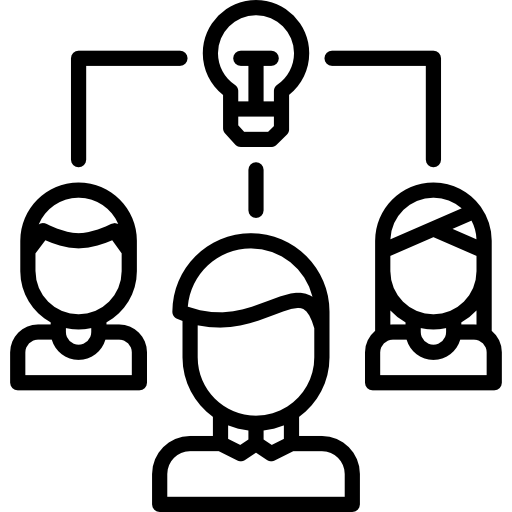ICFO decide game
Group 2 – Participant 4
Story cards
Read all the cards from this category, choose the one that looks more interesting to you and explain it to the rest of the group.
david díaz
Story Card 1
I'm an accountant and I'm very interested in science. That's why I often watch TV shows about technology. A few weeks ago, I saw Prof. Lluis Torner, director of ICFO, explaining that a smartphone uses things that have earned more than 20 Nobel photonic prizes, which make cameras, sensors, screens possible, as well as the technology used to manufacture microcircuits and many of their components, and to make the Internet possible. Who would have guessed that I had so much photonics in my pocket!
information and cYberseCurity
alina anderson
Story Card 12
A few weeks ago I got the job of my dreams: I’m working at a maker space, where I can tinker with all the machines they have. I love the flexible structures that can be obtained by cutting wood: without the precision of lasers, they wouldn’t be so easy to do! I’m also fascinated by the new 3D printer: thanks to its laser, we can quickly reproduce plastic parts that makers on the other side of the world have designed. It’s almost like the teleporters of science fiction movies!
photonics everywhere
blanca bueno
Story Card 13
I've loved cinema since I was a child, but I decided that would be my life when I saw my first 3D movie. The possibility of seeing the depth of the scenes on the screen seemed like magic to me. But, as is often the case in cinema, it’s just a special effect! The glasses with polarizing lenses that are given at the entrance, select different photons that come from the projectors, bringing to our eyes two slightly different images that our brain combines creating the feeling of three-dimensionality.
photonics everywhere
info cards
Read all cards from this category, choose the two that look more interesting and explain them to the rest of the group.
graphene-based light sensors
Info Card 4
There are things our eyes cannot see. For example, infrared and ultraviolet radiation (which our eyes and conventional cameras cannot capture) carry information that can help us control the quality of food, monitor the health of our body, or see in adverse conditions (darkness, fog).
With the graphene-based sensors being developed at ICFO in collaboration with Qurv (an ICFO spin-off born in 2020), it would be possible to do all of these things and even more with small, low-cost detectors easily integrated into current electronic systems and wearable technologies.
Photo: Prototype of graphene-based wearable device to detect vital signs
health
informaTION and cybersecurity
graphene, a material with a great future
Info Card 11
Graphene is the first 2D material to be manufactured in the world. Despite being only one atom thick, graphene is stable and surprisingly strong. Its physical properties make of it an excellent conductor of heat and electricity, as well as being flexible, extensible and transparent. All these characteristics make graphene a very interesting material for the development of new technologies.
Institutions are aware of the potential of this material and have created the Graphene Flagship (at the European level) and GraphCAT (at the local level) to accelerate research on this material and bring its benefits to society. ICFO employs some of the world's leading experts in the field of graphene, participating in many of the projects of these two networks.
Photo: Graphene-based broadband camera designed by an ICFO team
photonics everywhere
multicolor 3d printing
Info Card 13
Digital manufacturing is one of the key innovations of the fourth industrial revolution we are experiencing. The ability to print 3D objects has opened up countless new possibilities on both the small scale of makers and startups, and the industrial scale.
One of the most interesting techniques to quickly obtain complex objects is sintering, but it has the important limitation that it can only create black or gray objects.
A recent technology developed at ICFO allows different colors to be added to this 3D printing technique, opening the door to new potential applications and the possibility of integrating artistic and aesthetic design into digital manufacturing.
photonics everywhere
shedding light on covid-19
Info Card 15
During the first big wave of the COVID-19 pandemic, an ICFO team worked intensively with a medical team at Parc Tauli Hospital near Barcelona to test a new idea: to evaluate with photonic devices microvascular dysfunctions in COVID-19 patients.
This could be a low-cost, non-invasive option for patients and easy to use for healthcare professionals to help establish the best treatment during the different phases of COVID-19 and help customize treatments. The project spread to different countries around the world and was even selected to be one of the 23 scientific projects funded by the European Union in the late summer of 2020 to deal with the pandemic.
Photo: ICFO scientists testing the equipment before sending it to hospitals
health
thinking cards
Read all the cards from this category, choose the one that looks more interesting to you and explain it to the rest of the group.
can we trust science?
Thinking Card 3
Technology and science have been a part of our lives and such influence grows overtime. Is this positive? There is a part of the population that does not trust scientific results and rejects technological advances: what do you think of their position?
in person or virtual?
Thinking Card 16
Conferences are the perfect opportunity for scientists to share their work with colleagues around the world, exchange ideas, and establish new collaborations.
In recent years, the climate emergency has begun to open the debate on whether travel should be reduced in favor of virtual events, which do not allow socialization and bonding to occur naturally as in a in person conference.
The 2020 pandemic has accelerated this debate: should scientific meetings be in person or virtual?
DECISIon
The time and resources available to solve important problems affecting society are limited. Imagine being part of the commission that has to decide how to invest the money for photonics research at European level for the coming years: knowing that photonics benefits society in many different ways, how would you distribute funds among the different research fields in photonics?
This is not an individual decision: each group must come to a unanimous conclusion by discussing correctly and rationally based on the facts that you have learned so far. There is no right or wrong answer. Like many things in life, it depends on the point of view you assume, the priorities you set, ...
light for health
Option 1
The pandemic that arose in 2020 taught us that public health is an important sector that affects many more aspects of society. A tiny virus can affect the lives of millions of people in all its aspects, not only health, but also the economy, industrial structure, labor market ...
That’s why it’s important to focus most of our efforts on research projects that can improve and care for people’s health.
light for information and cybersecurity
Option 2
We live in the information age. More and more companies and institutions are collecting and analyzing large amounts of data to improve industrial processes and services for the population. In addition, digital technologies are essential to communicate with each other, whether for work or fun. If information systems fail, strategic structures such as energy networks, traffic control, hospitals, governments, etc. fail, too. Thus, ensuring data security for quick and massive data transfer is of fundamental importance for a digitized society like ours.
That is why it is important to focus most of our efforts on research projects that can improve data collection, analysis, transmission and security.
light for energy and the environment
Option 3
We are in the middle of a climate emergency: to be able to solve it we need new environmental policies and the commitment of society as a whole. Science and technology can accelerate the change of paradigm that we need to save the planet with discoveries and innovative technologies. If we do nothing now, the Earth will be uninhabitable and unsustainable, but there’s still time.
That’s why it’s important to focus most of our efforts on research projects that can help us take care of our planet.
photonics everywhere
Option 4
Photonics is everywhere and has a positive impact in many different aspects of our lives. Sometimes, the same technology (such as the laser) can improve health, information and care for the environment at the same time. There are many global issues and it is difficult to set a priority, especially because they are interconnected.
That’s why it’s important not to focus our efforts on a single field of application: it’s better to diversify our efforts to have more chances of success.














